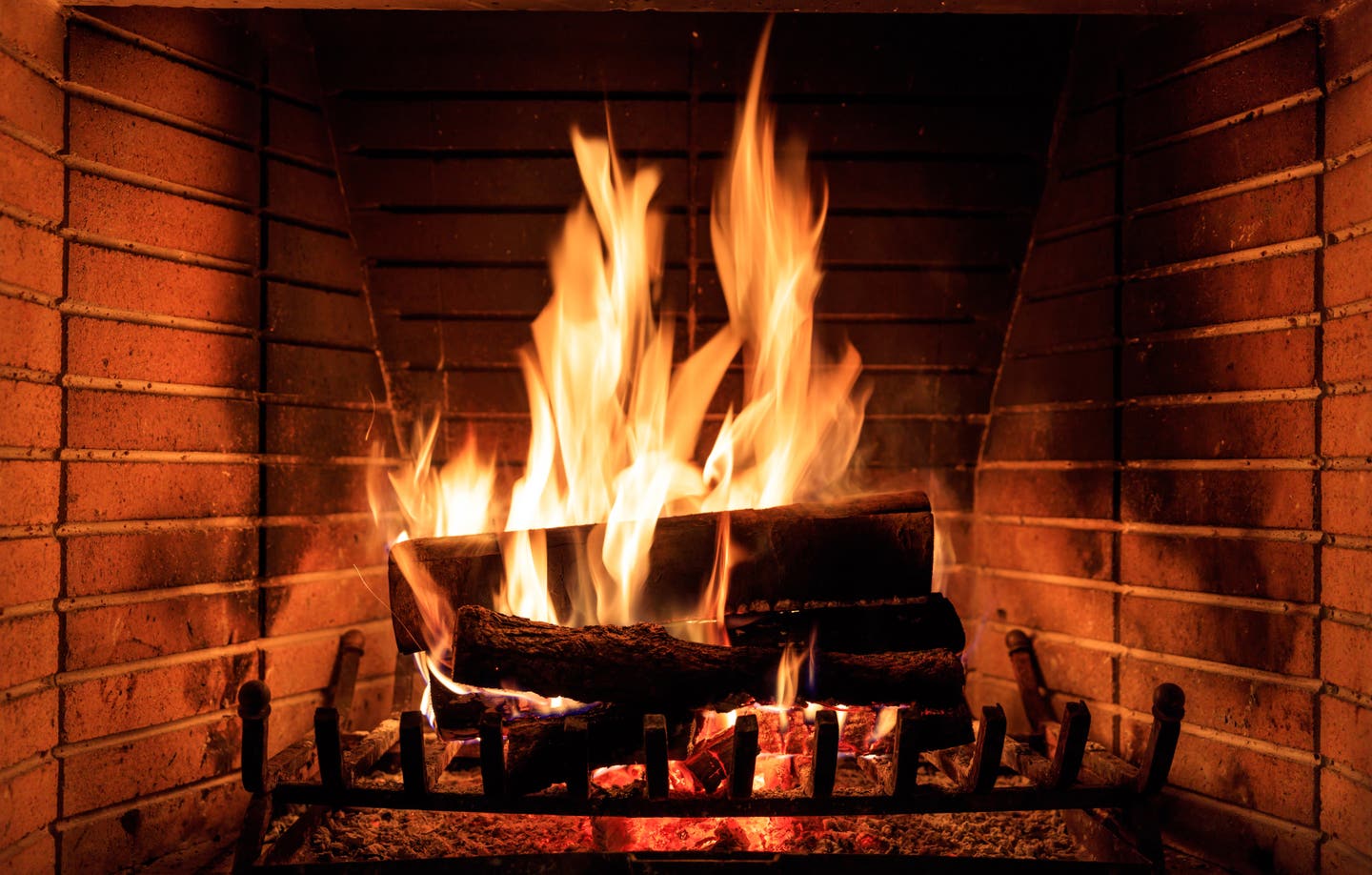
Mike Jackson
The Heat is on: Our Romance With Fireplaces
The convenience and comfort of modern heating and cooling systems is a technological success story. By just changing a few settings on a thermostat we have the ability to control our comfort in a manner that our ancestors would have never imagined. One starting point of this revolution was the cast iron heating stove, an invention of the 18thcentury with a popular connection to Benjamin Franklin. The cast iron stove replaced the fireplace as a functional necessity, but it never replaced the fireplace as a symbol of the warmth, comfort and even emotional well-being. This is a rather unusual story. A new and much better technology made the old technology obsolete, but we were so emotionally attached to it we couldn’t give it up. The fireplace remains a prominent feature in design today in residential, commercial and institutional settings. The hearth and the heart have been mated in this architectural feature.
This quote, from an 1897 catalog, sums up our human comfort in the hearth:
The design of the fireplace as the centerpiece of the Victorian parlor, the ranch house living room or a modern hotel lobby was an opportunity for many building products. The masonry firebox and flue, the wooden millwork of the mantelpiece, the fireplace accessories and the chimney pots on top of the house were all part of the complete system. Fireplace design evolved in parallel with architectural fashions, from the simple appearance of the Colonial era to the lavish designs of the Victorian era. By the mid-20thcentury, the massing of the fireplace masonry became its major feature while the hearth diminishes to a simple opening. Decorative fireplaces with no ability to provide heat were the final evolution of the fireplace – when form triumphed over function. The heat was off.
The APT Building Technology Heritage Library contains several hundred documents associated with the word fireplace or fireplaces. The are many more documents within the categories of millwork or masonry that will include fireplaces and fireplace mantels. The examples selected in this feature showcase the evolution of fireplace designs from the mid-19th through the mid-20th centuries. The simple fireplace of the Colonial era had a revival in the 20th century with the era of the Colonial Revival. The use of elaborate stone mantels, including highly ornate examples based upon generations of European predecessor, show up in urban apartments and grand houses. The Art Deco era and the modern ranch house era also had their impact on fireplace designs, particularly in the mantel surrounding the firebox. There are even specialty catalogs of fireplace accessories, usually decorative metal work for managing the fire. The use of modern technologies such as gas and electricity as alternative to fire make their appearance in the mid-20th century. Regardless of the heat source, the fireplace remains a prominent architectural feature of modern living, one that takes us all back to the roots of humankind when we learned how to manage fire for cooking and comfort.
J. L Mott Iron Works, New York NY
The J. L. Mott Iron Works had an extensive line of fireplace inserts and accessories. This era featured many examples with ornamental motifs on virtually every surface.
Fiske, Homes & Co., Boston MA
The wonderful illustrations in this catalog often featured the happy home-owner sitting in front of the open fire, in an era when most houses were heated by stoves or boilers.
Chas. F. Lorenzen & Co., Chicago IL
This extensive catalog featured the metal firebox and accessories with more than 60 designs for wooden mantels. The last part of the catalog feature brick and tile mantels, which gained in popularity with the arts and crafts era of residential architecture.
E. L. Roberts Co., Chicago IL
Elaborate millwork mantels were one method of making the fireplace a central feature of the parlor or living room. Millwork catalogs were filled with examples in a wide variety of styles.
G. Curtis Gillespie, New York NY
This is a wonderful place to begin the story of the fireplace, as is contains Benjamin Count of Rumford’s Essay on “Proper Fireplace Construction.” Benjamin Rumford developed the metal firebox and improved safety and performance of the fireplace in the late 18th century, a design that has endured until today. This volume also showcased elaborate European mantels from many eras and locations.
American Face Brick Association, Chicago IL
The use of masonry for both the functional flue and decorative appearance of the fireplace has a long tradition. This publication from the American Face Brick Association featured examples in a wide range of architectural styles.
Mosaic Tile Co;, Zanesville OH
This tile catalog featured more than 20 decorative fireplace mantels. The color illustrations provide a delightful summary of the popular colors of this era.
Edwin Jackson, Inc., New York NY.
The evolution of the fireplace with “artificial fire” is showcased in the 1932 catalog featuring “electric fires.” These wooden mantels were available for rooms “with or without flues.” The metal inserts were designed to replicate both wooden and coal fires.
Superior Fire Place Co., Los Angeles CA
The “Heatform fireplace” was a metal insert and flue system, which could be “adapted to any type of architecture.” The corner fireplace inserted into a larger masonry mass was a distinctive feature of modernist interiors of the mid-20th century.
Hardesty-Quittner, Inc., New York NY
Fireplace accessories
Fireplace accessories, including screens, andirons, pokers, brooms and dust pans were all parts of a fully furnished home. Fireplace accessories changed along with other interior design fashions, from traditional styles connected to the Colonial era to modernist designs.
Glo-Fire, Inc., Elsinore CA
The use of “ceramic logs” in oak or birch were combined with a gas fuel source and burner design that would provide the warmth and appearance of a wooden fire. “Only the smell of the wood is missing…”








